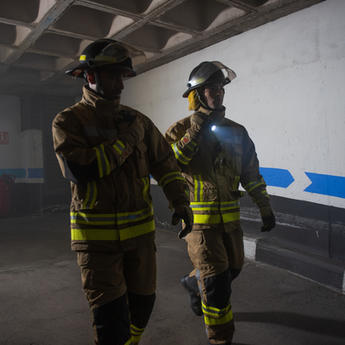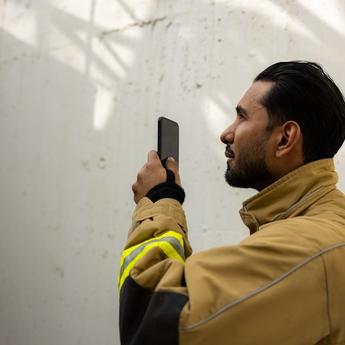When dealing with the rising number of cross-border incidents, public safety agencies depend on close cooperation and reliable communication with other countries’ agencies. It’s a major challenge, so an EU-funded research initiative, the BroadWay project, was created to prove modern critical communications capabilities for European first responders. Here are six proven benefits first responders gained from this experience.
The BroadWay project involved an Airbus consortium, including three MNOs that successfully demonstrated live private network field tests of critical communications across Europe.
The first responders played an important role throughout the project by providing insight into their operational needs, as well as useful feedback. The work identified six key benefits of first responders’ use of 4G/5G for mission-critical communications across borders.
1. Communicate seamlessly across borders
Today, European authorities use different communication systems, which are not connected with each other. This makes it very difficult for them to communicate and coordinate their work when cross-border collaboration is needed.
The Airbus consortium successfully demonstrated two full-scale field tests of seamless cross-border communications in the BroadWay project. Agnet’s mission-critical services gave first responders from 11 countries reliable access to voice, data and video.

Handpicked related content
Download this brochure: "Agnet for public safety". Discover how Agnet is the effective way to move your communications into the future and adopt 4G/5G capabilities.
2. Gain better situational awareness
Accidents happen, no matter how much professionals prepare. However, modern communications solutions, such as Agnet, can stop accidents turning into disasters, or even prevent them in the first place.
For example, multimedia messages or real-time video from the field provide a better situational picture. Instead of reacting to what has already happened, professionals can stay a step ahead. The BroadWay project showed how first responders could be better prepared, respond faster and protect people and property more effectively by using data and video services.
3. Operations can be run anywhere, anytime
Fast, reliable and highly available connectivity is vital for mission-critical communications as it enables users to get a connection whenever and wherever they need it. With new 4G/5G capabilities, Mobile Network Operators (MNOs) prioritize public safety users, even when consumers or enterprise users are experiencing congestion.
The Airbus consortium included three MNOs in the BroadWay project – Telekom Slovenije, LMT (Latvia) and Vodafone Netherlands. The consortium demonstrated priority use of MNO networks for public safety users wherever there was broadband network coverage – even from another country.
4. Use your smartphone as you would your radio
To encourage users to embrace new broadband capabilities on smartphones it is important to retain existing ways of working including functions and features familiar from TETRA or other communications tools. These can include setting up the same communication groups, emergency calls and location tracking. As well as accelerating adoption of a new system, this approach greatly reduces the need for training, something the BroadWay project’s first responders appreciated.
It's also important for every component to work seamlessly and securely together – apps, devices and accessories. Thanks to the SmarTWISP developer programme from Airbus, all solutions were proven to be reliable, secure, easy to use and compatible with Agnet.
Handpicked related content
Watch this video: "How to use your smartphone as you would use your radio". Discover practical examples of how to tailor your smartphone for different use cases.

5. New opportunities created by data
Today, Europe’s public safety professionals use radios to talk to their team members and dispatchers. However, these devices have limited data capabilities. Yet rich and abundant data, such as video, can dramatically improve operations on the street, at an accident site or at a fire.
Professional communications over broadband allows different organizations to work together – they can communicate and collaborate more easily and efficiently than before. Again, this was proven by the Airbus consortium’s live network field tests in the BroadWay project.
Handpicked related content
Download this white paper: "What 5G could mean for mission-critical users – right now ". Discover five fascinating examples of the new 5G capabilities in mission-critical use.
6. It all works in the field
Lots has been written about the exciting new capabilities of mission-critical broadband solutions, but do they really work in real life? Mission-critical broadband solutions are more versatile than narrowband solutions. However, they are not supplied by a single vendor, so it’s important to verify that everything works seamlessly and securely together.
This is why real-life tests and experiences are essential before undertaking the broadband evolution journey. The Airbus consortium successfully demonstrated two full-scale field tests of cross-border operations – a forest fire in Ljubljana, Slovenia and a car chase of a drug dealer in the Kerkrade region on the border between Belgium, Germany and the Netherlands.
Learn more about Agnet, the next-generation critical collaboration solution from Airbus. Agnet was the ultimate backbone for seamless critical communications in the BroadWay project and is trusted by many public safety organizations worldwide.






